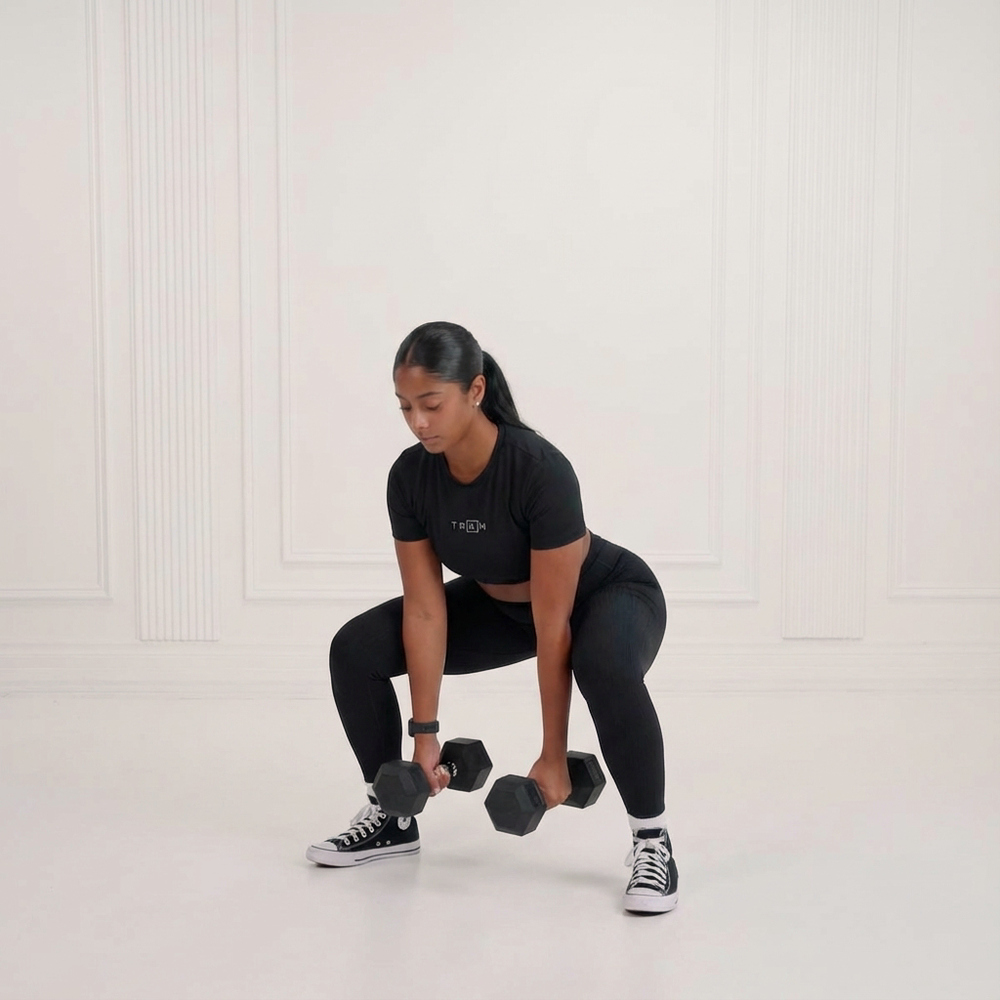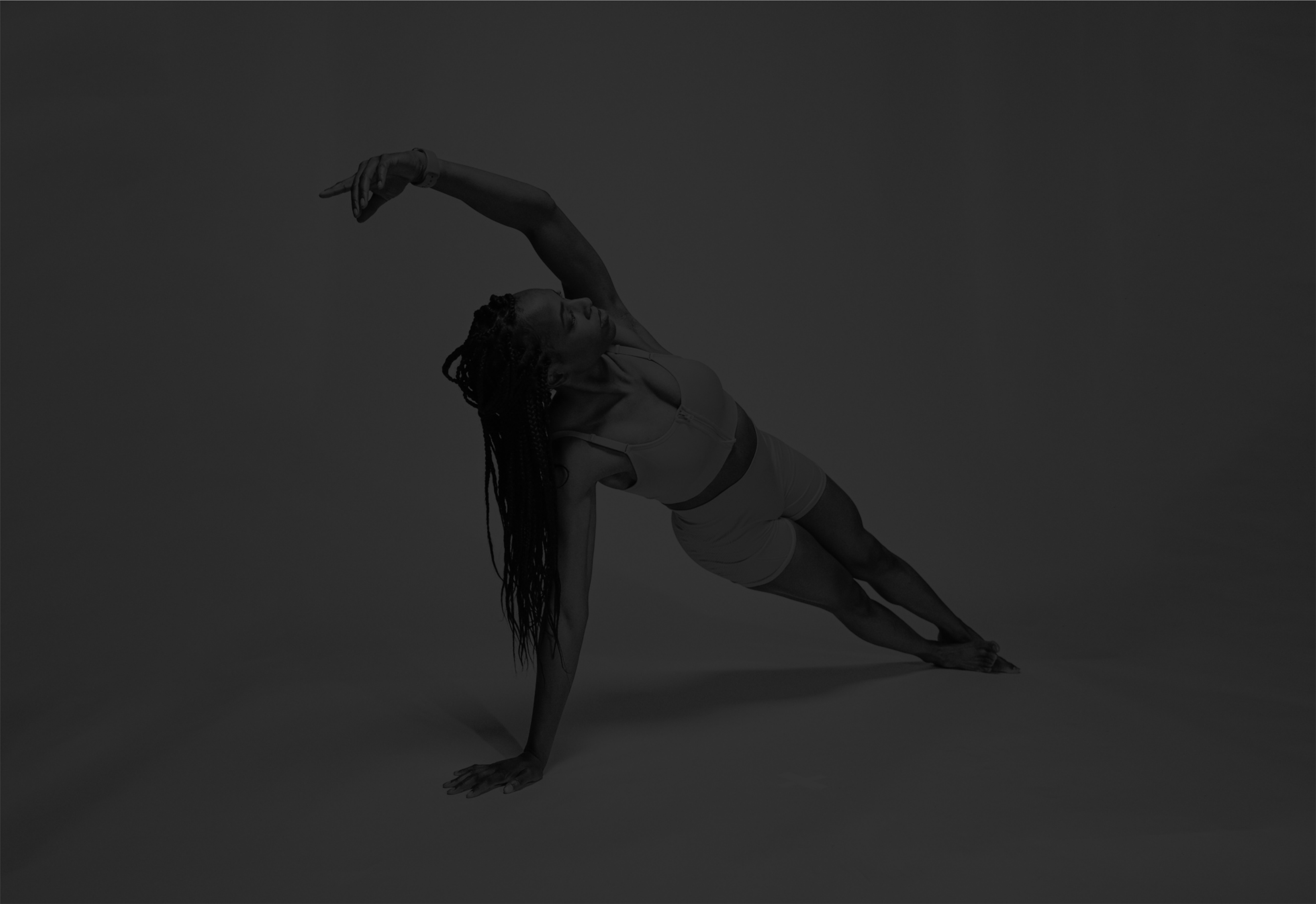Dumbbell Deadlift
 Auto Detected
Auto DetectedA hip hinge exercise using a pair of dumbbells that targets glutes, hamstrings, and lower back to build posterior chain strength and improve posture; versatile for home workouts as an alternative to barbell deadlifts.
About Exercise
Equipment
Dumbbells
Difficulty
3/5 • Intermediate
Primary Muscle Groups
Glutes, Hamstrings, Lower Back
Secondary Muscles
Quads, Adductors, Traps, Forearms, Abs
Popularity Score
7
Goals
Training Style
Setup Requirements
Requires Rack
No
Requires Bench
No
Requires Spotter
No
Space Needed
Small
Noise Level
Low
Muscle Breakdown
View Muscle MapGlutes
9/10Glute Max, Glute Medius
Hamstrings
9/10Biceps Femoris, Semitendinosus
Lower Back
8/10Erector Spinae
Quads
5/10Rectus Femoris
Adductors
4/10Traps
4/10Upper Traps
Forearms
4/10Flexors
Abs
4/10Transverse Abdominis
Programming
Typical Rep Range
5-12 reps
Rest Between Sets
120-180 seconds
How to Perform
Stand with feet hip-width apart, holding a dumbbell in each hand in front of thighs with palms facing your body. Brace core, keep chest up and shoulders back.
- Push hips back to hinge forward at hips.
- Lower dumbbells toward floor, keeping them close to legs.
- Bend knees slightly while maintaining neutral spine.
- Stop at hamstring stretch or torso nearly parallel to floor.
- Drive through heels to extend hips and knees.
- Stand tall and squeeze glutes at top.
Coaching Tips
Form Cues
- Hips back first
- Chest up always
- Weights track legs
- Drive through heels
- Squeeze glutes top
Breathing
Inhale as you lower the dumbbells; exhale as you drive up.
Tempo
3-0-1
Range of Motion
From full hip extension standing position to torso nearly parallel to floor or dumbbells near ground without back rounding.
Safety
Safety Notes
- Avoid if acute lower back pain
- Start with light weights
- Brace core throughout
- Keep spine neutral
- Warm up hips and back
- Stop if pain occurs
Spotting
Not typically needed; use safeties or lighter weights for solo training to avoid dropping.
Common Mistakes
- Rounding lower back
- Squatting too much
- Jerking the weights
- Hyperextending at top
- Arms bending
- Grip slipping
When to Avoid
- Acute lower back injury
- Recent hernia
- Spinal disc issues
Flexibility Needed
- Adequate hip hinge mobility
- Ankle dorsiflexion for stance
Build Up First
- Mastery of basic hip hinge
- Core bracing technique
Also known as
DB Deadlift, Two-Dumbbell Deadlift
Found this helpful?
Share your thoughts or help us improve this guide.
Similar Exercises

Dumbbell Sumo Deadlift
Dumbbells
Glutes

Dumbbell Stiff-Leg Deadlift
Dumbbells
Hamstrings

Dumbbell Romanian Deadlift

Dumbbells
Hamstrings

Dumbbell Single-Leg Deadlift
Dumbbells
Hamstrings

Dumbbell Romanian Deadlift to Row
Dumbbells
Hamstrings

Dumbbell B-Stance Romanian Deadlift
Dumbbells
Hamstrings

Dumbbell Romanian Deadlift to Shrug
Dumbbells
Hamstrings

Dumbbell Single-Arm Stiff-Leg Deadlift
Dumbbells
Hamstrings

Dumbbell Romanian Deadlift to High Pull
Dumbbells
Hamstrings

Dumbbell Sumo Squat to Romanian Deadlift
Dumbbells
Glutes, Hamstrings


subscribe to our newsletter
Contact Us
hello@trainfitness.aiFind Us
130 Spadina Avenue, Toronto,
Ontario, M5V 0H4, Canada
©2025 All Rights Reserved
